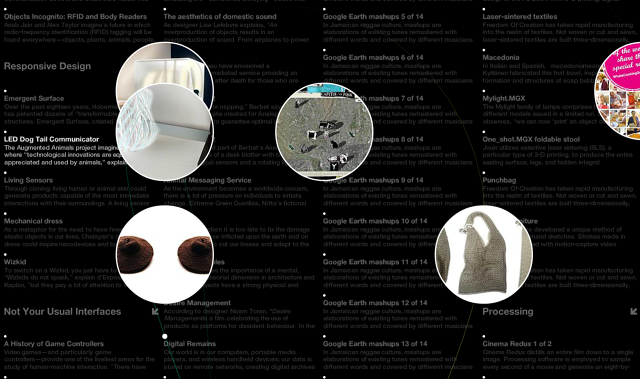Do You Have An Elastic Mind? 3 Traits Of Designers Who Do
Designers have gotten what they asked for: a seat at the corporate boardroom table. Now they have to adapt to a new working reality.
Walking around my studio, I see small teams collaborating at temporary, flexible workstations. There’s Eunji, a researcher, designer, and former high school teacher, working with Amy, a graphic designer with a degree in industrial design, to visualize some research. There’s Kc, a reformed math major turned designer, testing out a mechanism with Rob, our blogging engineer. They are hybrid professionals with dual degrees, diverse interests, and endless curiosity, and I believe these kind of teams represent the future of design and innovation.
During the last few years, the leadership at my firm has re-thought the qualities that define a successful product innovator, as society, the economy, technology, and even the product development process have all evolved. We used to recruit for hard skills—the best sketchers or those with the best rendering skills—but today we’re looking for designers with elasticity.

Elasticity is not a completely new concept. In 2008, the Museum of Modern Art presented Design and the Elastic Mind—a fascinating collection of objects that illustrated how our minds have been stretched by rapid advances in science and technology. The exhibition looked at designers’ roles in translating massive changes into objects at a very human scale, making broad ideas more relatable, usable, and meaningful.
The cultural tremors represented in Design and the Elastic Mind—artificial intelligence, genetic engineering, 3-D printing, and digital interfaces, among others—have become commonplace in 2015, and even more changes have shaken up the way we live and work, like the global recession and the rise of the smart phone.
One change has been particularly monumental in the design industry: the designer’s role in the product development process. For about a decade, designers have been asking for a seat at the corporate boardroom table. As a profession, we’ve pushed to be involved earlier and earlier in the product development process. Now we’ve gotten what we asked for, and we have to adapt to it.
Our new role as visionaries, decision makers, and strategic informants means we can’t rely on any rules. There are more stakeholders, more complicated products, and faster market cycles. In this environment, elasticity is more important than ever. It’s not just a museum-worthy exception; it’s become the rule.
MoMA defined elasticity as a combination of adaptability, plus the ability to respond to acceleration. Even before the exhibition, economists used the term to describe how consumers and producers change their demand and supply in response to price or income changes. Elasticity is essentially responsiveness to change: the ability to stretch and quickly rebound, coming back to your core skills and discipline. Elasticity is flexibility.
Lately, I’ve been thinking about exactly what it means to be elastic as designers, and here are three traits that I see defining successful designers and design teams:

1. Cognitive Flexibility
We recently worked with a powerpoint slide template that our client gave us for presenting our solutions. It was a dense document, and our visuals took up only one quarter of the slide’s real estate. The rest of the space was dedicated to information like business case, competitive analysis, product roadmap, product ecosystem, and consumer research—information that we were also responsible for supplying.
Designers today must speak several languages. It used to be enough to be fluent in visual communication, speaking the native language of form, color, materials, etc. These things are still important, but they’re now only part of the picture. As we talk to more diverse teams of business stakeholders in the product development process, we must be conversant in the languages of all the business disciplines. Designers have always faced the challenge of advocating for their ideas and points of views. Now they’re being stretched to weave multi-faceted stories around solutions that address the concerns of each stakeholder. In the same breath, they must be able to discuss business strategy with a CEO and cost constraints with an engineer.

2. Emotional Flexibility
Most of my team members at Karten Design are in the primes of their lives. Their bodies are strong and able. But often they’re developing products for people in different circumstances. We’ve spent time with people suffering from life-altering conditions like hearing loss, respiratory disease, and chronic pain.
The immersive research that most design teams do today unleashes intense emotion. It’s not rare for the people we’re studying to shed tears as they describe the challenges they face. In some instances, our researchers are moved to tears, too.
Empathy is important when designing for people with such different life experiences—those at different life stages with diverse values, capabilities, and preferences. Emotional flexibility, or elasticity, means someone is able to stretch past their comfort zone, open their minds, and empathize with others. This moment of connection becomes a defining experience that drives them to help the people they’ve come to understand and care about. But emotion isn’t enough. Elastic people are able to return to the studio and channel that emotion through their expertise to create a meaningful solution.

3. Contextual Flexibility
Our teams are working on a broader range of projects than ever as more businesses and industries recognize the value of design. One day, we’re working with complex medical technologies, from electronic nerve stimulation to digital sensing. The next day, those same people are re-thinking some of the most mundane human experiences, like washing your hair or using the toilet.
Designers’ minds are stretching and contracting between many different scales and contexts. This way of working requires designers to quickly come up to speed on complex technologies, extending themselves intellectually to make new technologies and experiences simple and meaningful for the average user. It also requires the flexibility to change your frame of mind from macro to micro—from learning about a very foreign subject, to putting an everyday problem under the microscope and looking at it with fresh eyes to create a new solution. The best innovators can quickly shift their perspective.
Hard skills are still important. In fact, no one makes it through the door without them. But in an environment where we’re increasingly called upon to stretch in so many directions—to switch teams, pivot strategies, or fill multiple roles—it’s elasticity that is the differentiating factor.
It comes to some people more easily than others, but I do believe elasticity can be learned and practiced. Just like improving physical flexibility, it’s all about stretching. You can start to limber up by suspending judgment, embracing change, and approaching new opportunities with an open mind. In the future, the products making the most impact on the world will be conceived by elastic innovators.
[Illustrations: Cheryl Casey via Shutterstock]
Fast Company , Read Full Story
(197)













